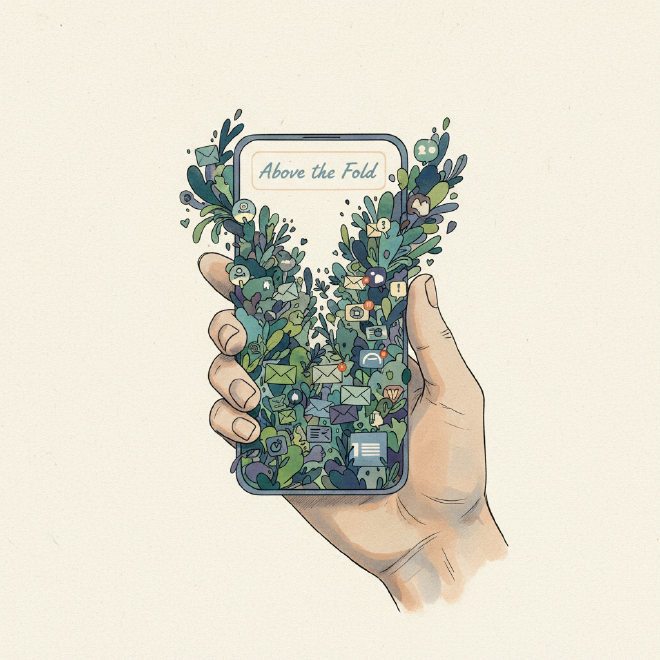No-Greeting Emails: Boost Engagement & CTR in Marketing
Table of Contents
The “No-Greeting” Email Trend: Why Top Brands Are Ditching “Hi [Name]” for Instant Engagement #
You know that feeling when you rip open an email, hoping for something good, and instead, you’re hit with “Hi [First Name]”? It’s like, yeah, you know my name, but do you know me? Do you know what I actually care about right now?
Honestly, for a long time, “Hi [First Name]” was the gold standard of email personalization. We were all told to do it, and it made sense. It felt personal, right? But lately, if you’re like me, you’ve probably noticed something shifting, especially among the big brands, the ones who are really nailing their email marketing. They’re often skipping the pleasantries altogether.
No “Hi [Name].” No “Hope you’re having a great week.” Just… straight into it.
And you know what? It works.
This “no-greeting” email trend isn’t just some quirky copywriting choice; it’s a strategic move born from a crowded inbox, shrinking attention spans, and a much more sophisticated understanding of what true personalization really means. If you’re a small business owner or a marketing pro trying to cut through the noise, this is a trend you absolutely need to understand. Because it might just be the secret sauce for your next campaign.
Let’s dive into why this is happening and how you can apply it.
The Inbox Overload: Why Every Second (and Character) Counts #
Think about your own inbox for a moment. It’s a jungle, isn’t it? Notifications, newsletters, promotions, personal messages – it all vies for your attention. And frankly, most of us are scanning, not savoring. We’re looking for immediate value, that little spark that tells us “this is worth my time.”
That’s where the traditional greeting starts to falter.

When you open an email, especially on your phone (and let’s be real, that’s where most of us are checking emails these days), the first few lines are everything. They’re your make-or-break moment. If those precious lines are taken up by a generic “Hi [Name],” you’ve essentially used up valuable real estate without delivering any actual value.
It’s like walking into a store, and instead of seeing the amazing product display, you’re greeted by a robot saying, “Hello, [Customer Name], welcome to our store.” You’re thinking, “Okay, thanks, but where’s the cool stuff?” Modern audiences are impatient, and frankly, they’ve been trained to be. We want the goods, and we want them now.
This isn’t about being rude; it’s about being efficient. It’s about respecting your reader’s time and getting straight to the point – the value – right from the jump.
Beyond “Hi [Name]”: Redefining Personalization #
Here’s the thing: just dropping someone’s first name into an email isn’t really personalization anymore. It’s a basic merge tag. It’s expected. In fact, if it’s the only personalization you’re doing, it can sometimes feel a bit… impersonal. Like a mass email trying a little too hard to pretend it’s just for you.
True personalization, the kind that genuinely connects and drives action, goes much deeper. It’s about sending the right message to the right person at the right time.
Think about it this way:
- Segmenting your audience based on their interests, past purchases, or engagement level? That’s personalization.
- Triggering an email when someone abandons a cart, or views a specific product multiple times? That’s personalization.
- Recommending products based on their browsing history or what similar customers bought? Now that’s personalization.
These strategies show you understand their needs, their journey, their life. A simple “Hi [Name]” pales in comparison. When you’re using robust segmentation and automation features, you’re delivering content that’s inherently personal, even without a formal greeting. The message itself is the personalized greeting. It says, “I know what you’re interested in, and I have something valuable for you.”

What Does a “No-Greeting” Email Even Look Like? #
Okay, so we’re ditching the “Hi [Name].” What do we put instead? The answer is simple: value.
Imagine a subject line like: “Your 20% off code is inside!” What’s the very first line of the email? It shouldn’t be “Hi [Name].” It should be:
“Here’s your 20% off code: SAVEBIG20. Shop now and save on all new arrivals!”
See how that works? No fluff. Immediate delivery of the promise.
Or perhaps it’s a newsletter from a brand like Morning Brew or The Hustle. They often kick off with something like:
“Good morning! Here’s what you need to know about the market today.”
Or:
“This week’s deep dive into AI is here. You won’t want to miss our take on [specific news].”
It’s direct, confident, and respects the reader’s time. It immediately tells them why they should keep reading. It’s like a good friend who just cuts to the chase because they know you’re busy and trust you’ll appreciate the directness.
Key elements of a strong “no-greeting” opening:
- Reiterate the subject line’s promise: Deliver on the expectation you’ve already set.
- Jump straight into the core message: What’s the most important thing you want them to know or do?
- Pose a compelling question: “Struggling with [pain point]? We’ve got a solution.”
- State a bold claim or insight: “Our latest research shows X, and here’s what it means for you.”
It’s about making the first impression count with substance, not just a salutation.
The Benefits: Why Make the Switch? #
Beyond just feeling more modern, adopting this “no-greeting” approach can actually deliver some pretty tangible benefits for your email campaigns:
- Boosted Engagement (Open & Click Rates): When your subject line is intriguing and the first line of your email immediately delivers on that promise, people are more likely to keep reading and, crucially, to click. Less friction, more action.
- Superior Mobile Experience: Every character on a mobile screen is precious. Cutting out unnecessary greetings means more of your core message is visible “above the fold,” making it easier for readers to grasp the value quickly.
- Stronger, More Confident Brand Voice: A direct, value-first approach signals confidence and authority. It tells your audience you respect their time and have something genuinely important to share, rather than relying on polite formalities.
- Better Deliverability (Potentially): While not a direct cause, an email that consistently delivers value and engages subscribers is less likely to be marked as spam. High engagement signals to email service providers that your content is desired. (And having a platform that actively protects your domain reputation and filters invalid addresses helps immensely here, too.)
How to Test the “No-Greeting” Approach (Actionable Insights) #
Look, I’m not saying you should just flip a switch and ditch all your greetings tomorrow. That would be irresponsible. The beauty of modern email marketing is that you can test everything.
Here’s how to approach it:
- Start with A/B Testing: This is non-negotiable. Pick a segment of your audience (or a few different ones) and run a simple A/B test.
- Version A: Your traditional “Hi [Name]” greeting.
- Version B: A “no-greeting” version that jumps straight into your most compelling message or offer.
- Monitor Key Metrics: Don’t just look at open rates. Track click-through rates, conversion rates (if applicable), and even replies or unsubscribe rates. A higher open rate with a lower CTR might tell you something different than a boost across the board.
- Consider Context: This approach might work better for certain types of emails than others.
- Promotional emails or flash sales: Perfect for “no-greeting.” Get to the deal!
- Newsletters: Often work well, especially if your subject line is very specific.
- Transactional emails (receipts, shipping updates): Probably still best to keep a standard, polite greeting here.
- Welcome sequences: You might still want a warmer, traditional greeting for the very first email to build rapport, then transition to “no-greeting” for subsequent emails.
- Segment Your Audience for Testing: Your audience isn’t a monolith. Younger, more digitally native audiences might respond better to directness, while some older demographics might still prefer a more traditional tone. Test different segments to see what resonates.
- Refine Your First Lines: The art of the “no-greeting” email lies in crafting an irresistible first line. Spend as much time on that opening sentence as you do on your subject line. Make it punchy, value-driven, and clear.
This isn’t a one-size-fits-all solution, but it’s a powerful tool to have in your arsenal. The only way to know if it’s right for your audience is to test, learn, and adapt.
The Future of Email is Direct & Valuable #
Ultimately, this “no-greeting” trend isn’t about being cold or impersonal. Quite the opposite, actually. It’s about a deeper, more sophisticated kind of personalization – one that respects your audience’s time, understands their needs, and delivers immediate value. It’s about cutting through the niceties to build a more direct, honest, and ultimately more effective relationship with your subscribers.
So, next time you’re crafting an email, pause for a moment. Do you really need “Hi [Name]”? Or could you jump straight to the good stuff, grab their attention, and show them exactly why they should keep reading? The modern inbox demands it, and your engagement rates just might thank you for it.

And if you’re looking for a platform that makes testing these kinds of strategies, tracking performance, and ensuring your emails actually land in the inbox simple, well, you know where to look. Getting those insights and having the tools to act on them is what truly moves the needle.